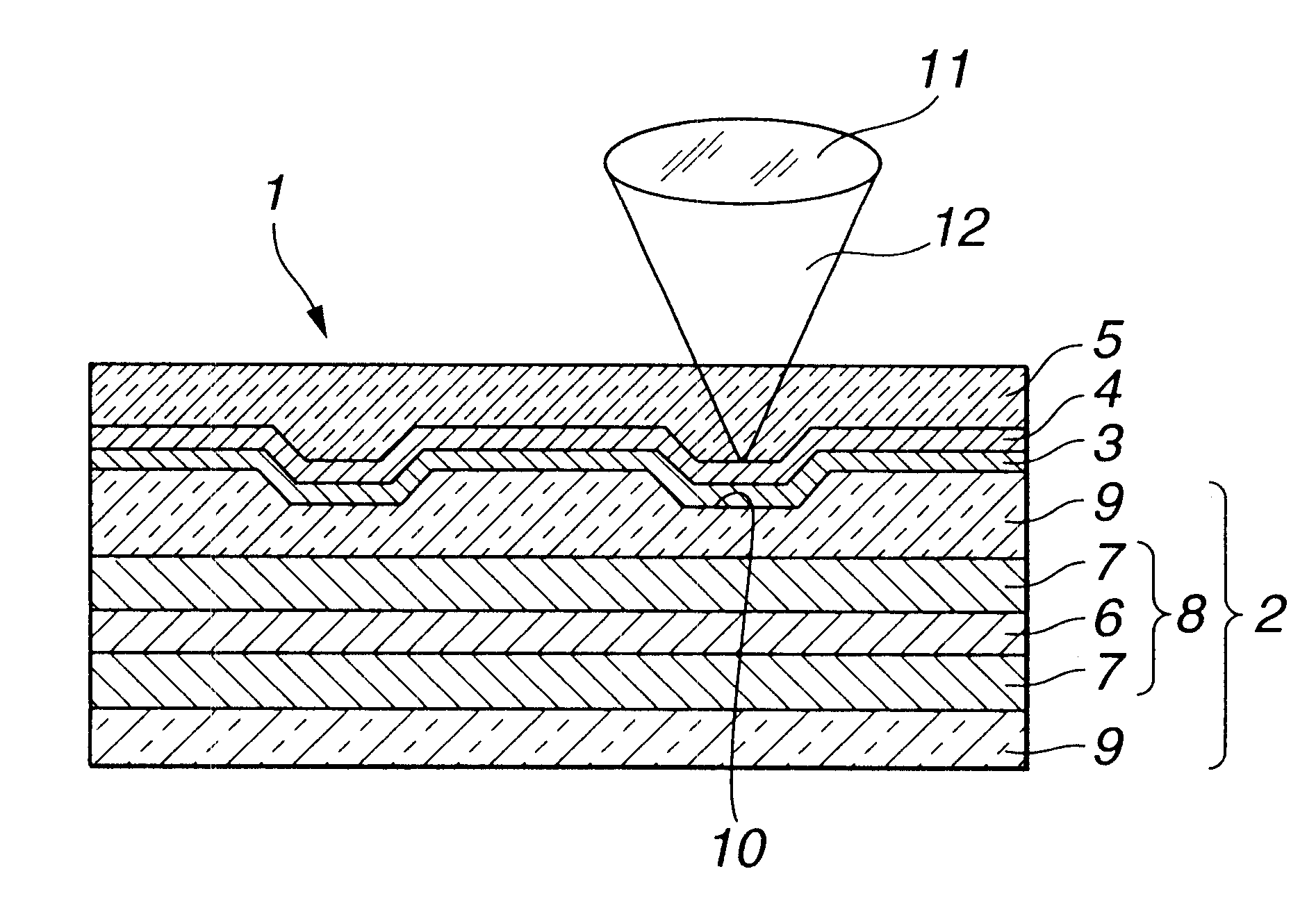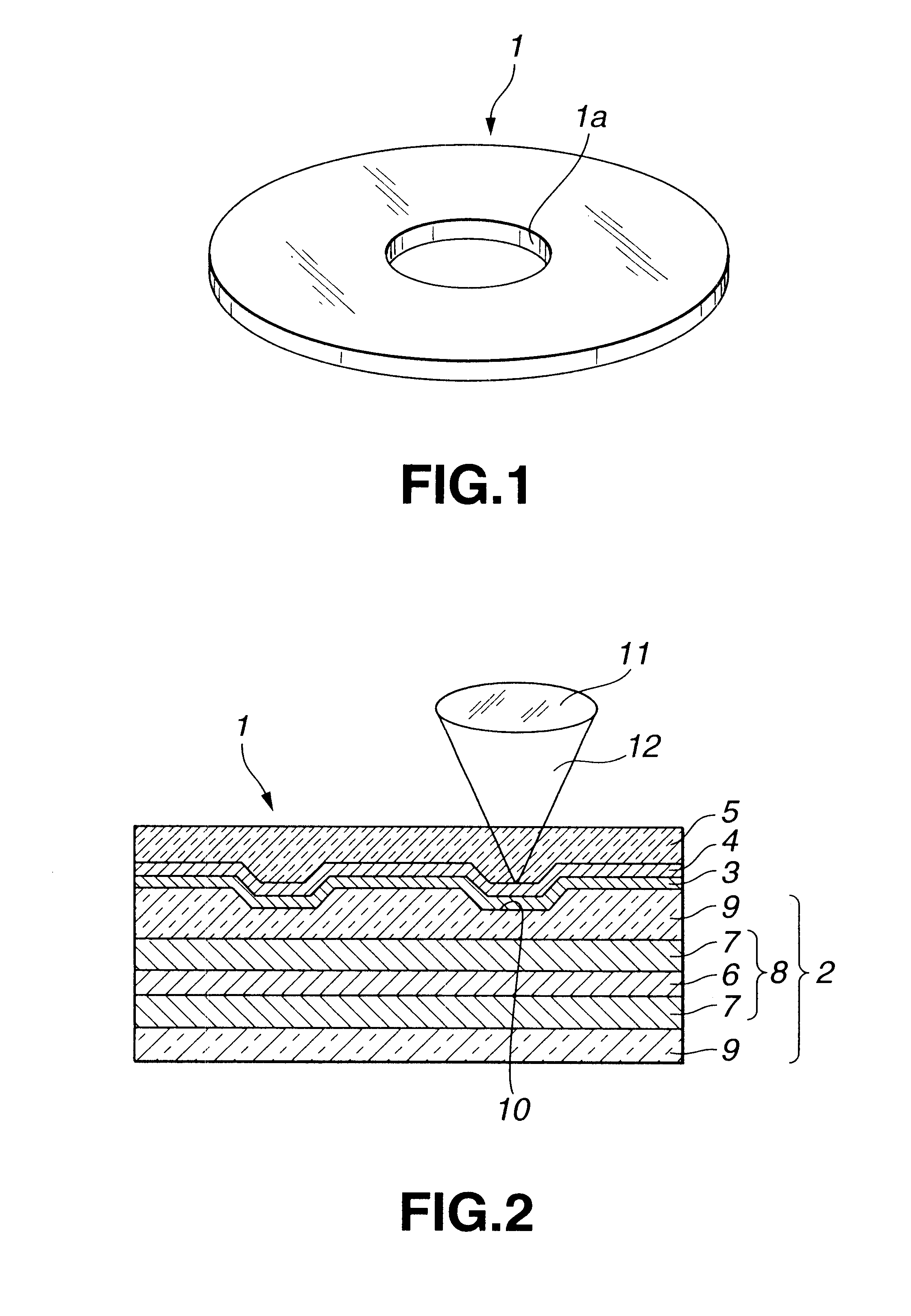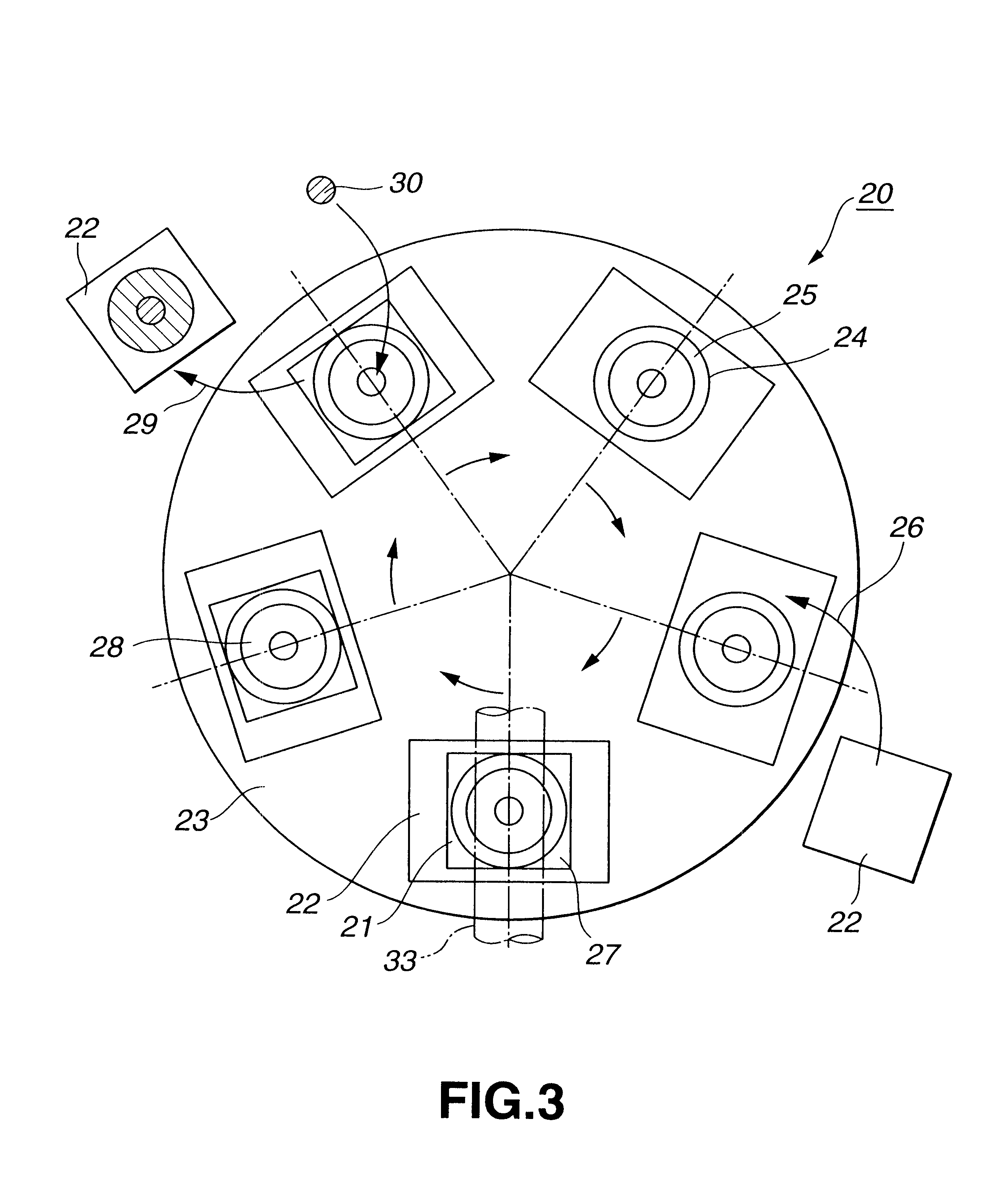Optical recording medium and method for producing the same
a recording medium and optical technology, applied in the field of optical recording mediums, can solve the problems of reducing the injection pressure of resin materials, and reducing the injection speed of resin materials, etc., to achieve excellent signal characteristics, sufficient rotation performance, and enhanced rigidity of substrates
- Summary
- Abstract
- Description
- Claims
- Application Information
AI Technical Summary
Benefits of technology
Problems solved by technology
Method used
Image
Examples
first embodiment
An optical disc as shown in FIG. 1 was manufactured. The surface layer, and the intermediate layer consisting of a core layer and fiber layer were prepared by using materials as described below.
Resin material: ZEONEX E-490(by Nihon Zeon Kabushiki Kaisha)
Glass transition temperature: 136.degree. C (Measurement method DSC)
Bending elastic modulus: 23,000 kgf / cm.sup.2 (ASTM D790)
Thermal deformation temperature: 122.degree. C (ASTM D648)
Percentage of water absorption: 0.01% or less (ASTM D570)
Refraction factor: 1.53 nd 25 (ASTM D542)
Specific gravity: 1.01 (ASTM D792)
Photoelasticity constant: 2 .times.10.sup.-13 cm.sup.2 / dyne
The surface layer was prepared by allowing ZEONEX E-490 to be in a form of thin plate a having thickness of 0.2 mm.
Resin material: ZEONR 1420 (by Nihon Zeon Kabushiki Kaisha)
Glass transition temperature: 136.degree. C
Bending elastic modulus: 22,000 kgf / cm.sup.2
Thermal deformation temperature: 136.degree. C
Percentage of water absorption: 0.01% or less
Refraction factor...
second embodiment
In the second embodiment, an optical disc as shown in FIG. 7 was manufactured. The surface layer and the intermediate layer were prepared by using materials as described below.
Resin material: polycarbonate ST-3000 (by Teijin Kasei Kabushiki Kaisha)
Glass transition temperature: 145.degree. C
Bending elastic modulus: 28,700 kgf / cm.sup.2
Thermal deformation temperature: 133.degree. C
Percentage of water absorption: 0.15% or less
Refraction factor: 1.585 nd 25
Specific gravity: 1.13
Photoelasticity constant: 45.times.10.sup.-13 cm.sup.2 / dyne
Polycarbonate ST-3000 was forced out so that its thickness was equal to 0.2 mm to allow the article to be in a sheet form to thereby prepare the surface layer.
Fiber material: Toreka texitile fabrics prepreg 2500 (By Toray kabushiki kaisha) (Material in which epoxy resin is impregnated into carbon fiber fabrics)
Warp / Weft: Flat fabrics of respective T300-3000 filaments
Resin percentage content: 40%
Thickness: 0.25 mm
The intermediate layer was put between a pa...
third embodiment
In the third embodiment, an optical disc as shown in FIG. 7 was manufactured. The surface layer and the intermediate layer were prepared by using materials as described below.
Resin material: ZEONEX E-490 (by Nihon ZEON Kabushiki kaisha)
Glass transition temperature: 136.degree. C (Measurement Method DSC)
Bending elastic modulus: 23,000 kgf / cm.sup.2 (ASTM D790)
Thermal deformation temperature: 122.degree. C (ASTM D648)
Percentage of water absorption: 0.01% or less (ASTM D570)
Refraction factor: 1.53 nd 25 (ASTM D542)
Specific gravity: 1.01 (ASTM D792)
Photoelasticity constant: 2.times.10.sup.-13 cm.sup.2 / dyne
ZEONEX E-490 was forced out so that the thickness was equal to 0.2 mm to allow it to be in a sheet form to prepare surface layer.
Resin material: ZEONR 1600 (by Nihon Zeon Kabushiki Kaisha)
Glass transition temperature: 163.degree. C
Bending elastic modulus: 28,000 kgf / cm.sup.2
Thermal deformation temperature: 141.degree. C
Percentage of water absorption: 0.01% or less
Refraction factor: 1.5...
PUM
| Property | Measurement | Unit |
|---|---|---|
| thickness | aaaaa | aaaaa |
| thickness | aaaaa | aaaaa |
| thickness | aaaaa | aaaaa |
Abstract
Description
Claims
Application Information
 Login to View More
Login to View More - R&D
- Intellectual Property
- Life Sciences
- Materials
- Tech Scout
- Unparalleled Data Quality
- Higher Quality Content
- 60% Fewer Hallucinations
Browse by: Latest US Patents, China's latest patents, Technical Efficacy Thesaurus, Application Domain, Technology Topic, Popular Technical Reports.
© 2025 PatSnap. All rights reserved.Legal|Privacy policy|Modern Slavery Act Transparency Statement|Sitemap|About US| Contact US: help@patsnap.com



